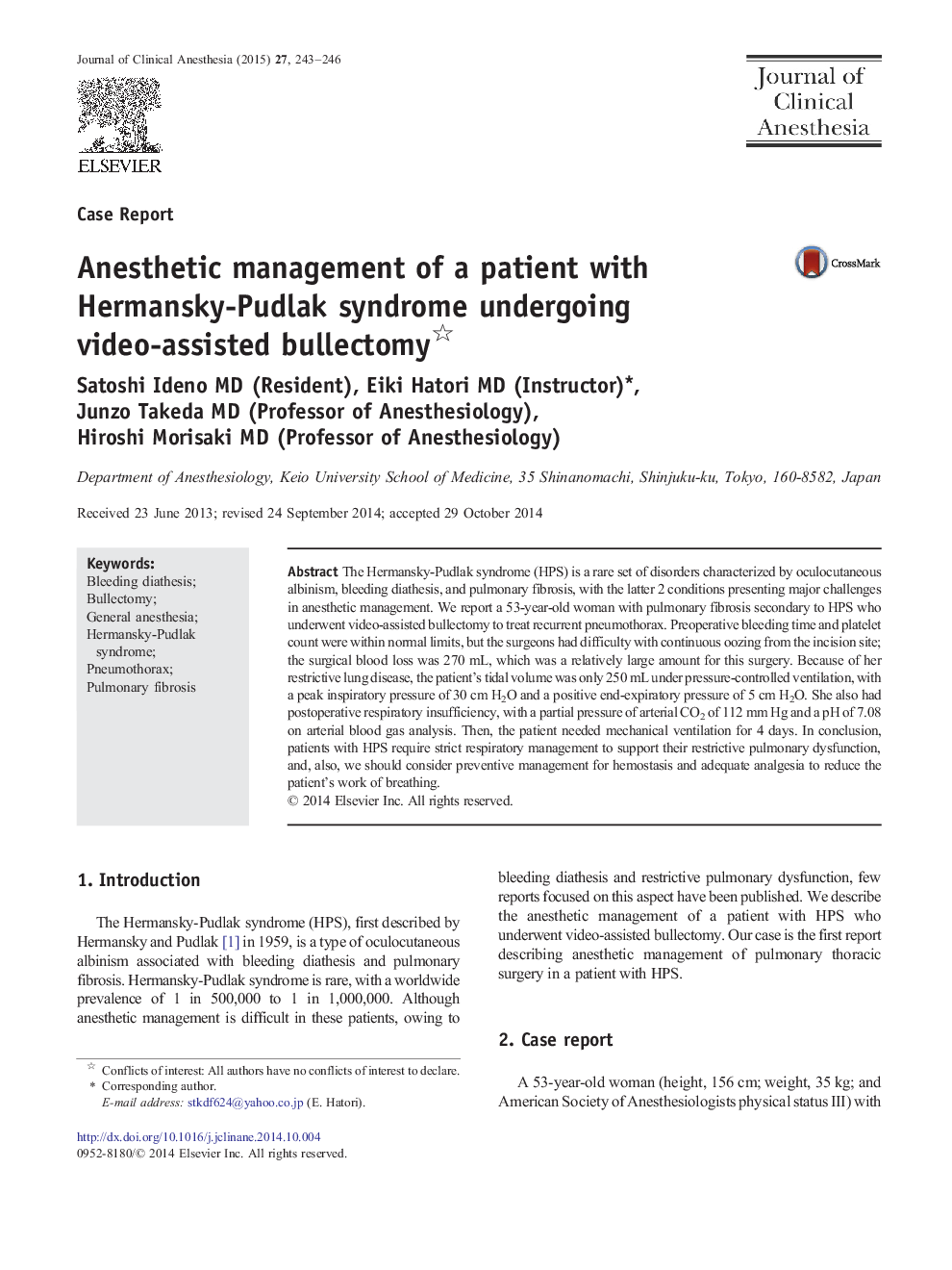| Article ID | Journal | Published Year | Pages | File Type |
|---|---|---|---|---|
| 2762708 | Journal of Clinical Anesthesia | 2015 | 4 Pages |
•We report anesthesia of thoracic surgery in a patient with Hermansky-Pudlak syndrome.•Pulmonary fibrosis and bleeding diathesis are the problems in anesthetic management.•Strict respiratory management is required to support residual pulmonary function.•Preventive management for hemostasis should be considered for reducing hemorrhage.•Adequate analgesia is very important for reducing a patient's work of breathing.
The Hermansky-Pudlak syndrome (HPS) is a rare set of disorders characterized by oculocutaneous albinism, bleeding diathesis, and pulmonary fibrosis, with the latter 2 conditions presenting major challenges in anesthetic management. We report a 53-year-old woman with pulmonary fibrosis secondary to HPS who underwent video-assisted bullectomy to treat recurrent pneumothorax. Preoperative bleeding time and platelet count were within normal limits, but the surgeons had difficulty with continuous oozing from the incision site; the surgical blood loss was 270 mL, which was a relatively large amount for this surgery. Because of her restrictive lung disease, the patient's tidal volume was only 250 mL under pressure-controlled ventilation, with a peak inspiratory pressure of 30 cm H2O and a positive end-expiratory pressure of 5 cm H2O. She also had postoperative respiratory insufficiency, with a partial pressure of arterial CO2 of 112 mm Hg and a pH of 7.08 on arterial blood gas analysis. Then, the patient needed mechanical ventilation for 4 days. In conclusion, patients with HPS require strict respiratory management to support their restrictive pulmonary dysfunction, and, also, we should consider preventive management for hemostasis and adequate analgesia to reduce the patient's work of breathing.
